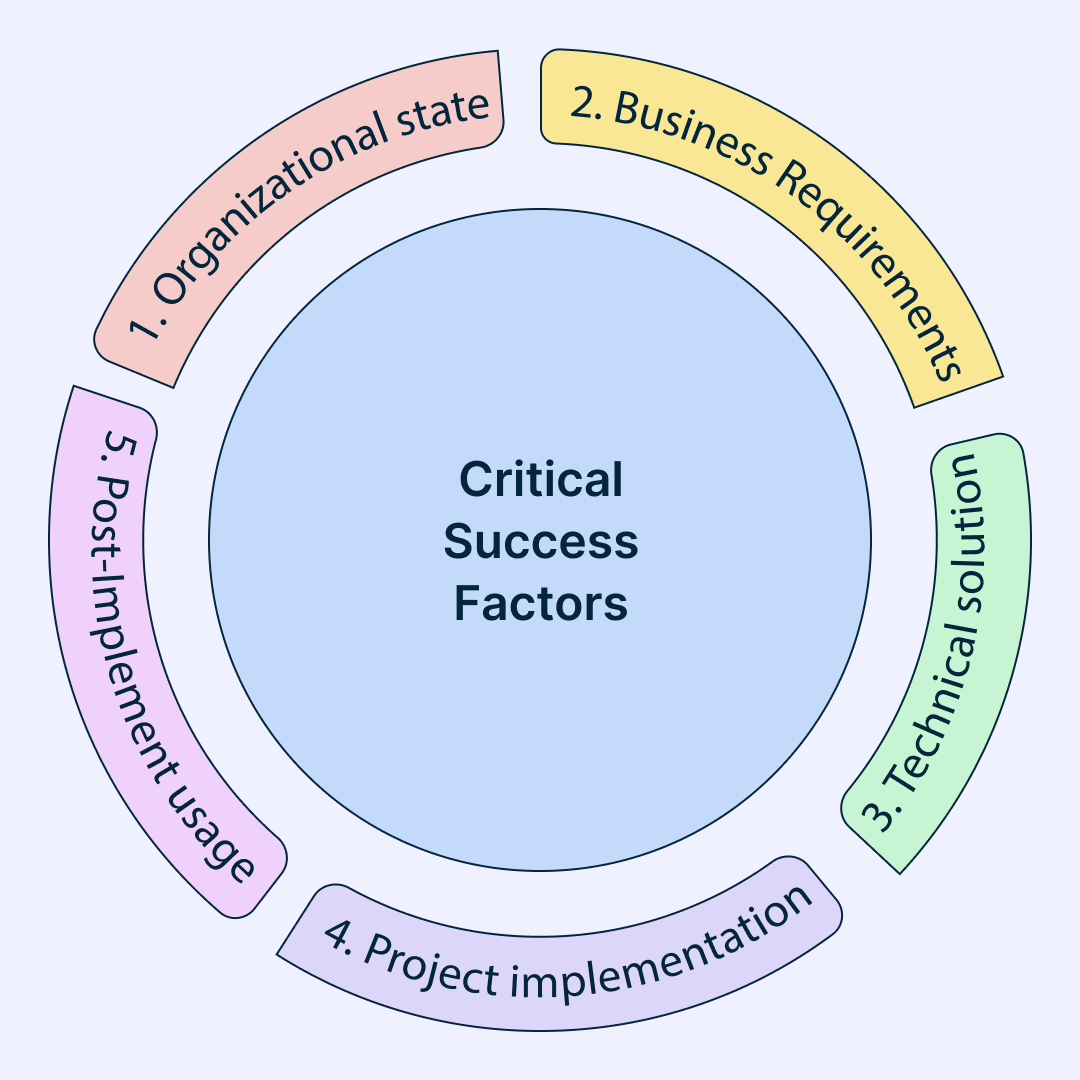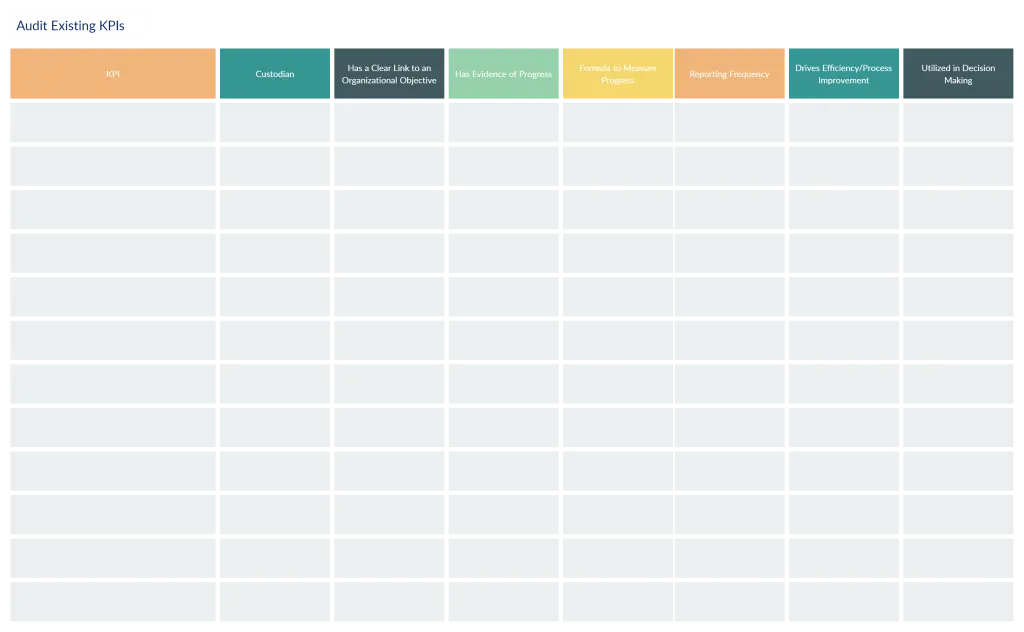Every business needs a roadmap for success. Without one, distinguishing victories from setbacks becomes a daunting task, casting uncertainty over the attainment of goals. Delving into the realm of Critical Success Factors (CSFs) unveils their pivotal role in steering the course of businesses and projects toward triumph.These factors serve as the guiding lights, ensuring teams and departments are synchronized, and efforts are channeled towards common objectives.
What Are Critical Success Factors?
Critical Success Factors (CSFs) are the essential elements that must be achieved to ensure success for a company or project. Understanding these factors is crucial as they help focus efforts on the most impactful areas. CSFs are not just about identifying what to do but also clarifying what not to waste resources on. They are tailored to specific industries and business models, making them unique and vital for strategic alignment.
These factors are crucial for the success of a project, initiative, or business strategy. CSFs vary depending on the industry, organization, and specific objectives, but they generally encompass the following characteristics:
Key Goals and Objectives: CSFs are directly linked to the primary goals and objectives of an organization or project. They represent the most critical aspects that must be achieved to consider the endeavor successful.
Measurability: CSFs should be measurable so that progress can be tracked effectively. They often have associated key performance indicators (KPIs) or metrics that indicate whether the factors are being met.
Strategic Alignment: CSFs align with the overall strategy and vision of the organization. They reflect the areas where the organization must excel to fulfill its strategic objectives.
Criticality: CSFs are essential for success. Failure to achieve these factors significantly increases the risk of failure for the project or organization as a whole.
Focus: CSFs help prioritize resources and efforts by highlighting the most critical areas that require attention and investment.

The Role of CSFs in Strategic Success
CSFs play a pivotal role in strategic planning by providing a clear roadmap for success. They help organizations prioritize their goals and allocate resources effectively. By defining critical success factors, companies can:
- Ensure that all team members are aligned with the strategic objectives.
- Measure progress quantitatively, as each CSF can be associated with specific performance metrics.
- Adapt to changing market dynamics by regularly reviewing and updating the CSFs.
For instance, in a technology company, a CSF might be the development of a new patentable technology, whereas, in a retail business, a CSF could be customer satisfaction ratings. This specificity ensures that strategic efforts are concentrated on the most critical areas.
Moreover, tools like Visual Strategic Planning Tools can significantly enhance the ability to visualize and manage these critical success factors, ensuring that they are not just defined but actively monitored and achieved.
Types of Critical Success Factors:
In his seminal work, Rockart outlined four distinct categories of Critical Success Factors (CSFs), each serving as a cornerstone in the foundation of organizational triumph
Industry Factors: These stem from the unique dynamics of your industry, dictating the essential actions required to maintain competitiveness. For instance, in the realm of technology startups, innovation emerges as a pivotal CSF, driving evolution and differentiation amidst fierce competition.
Environmental Factors: Arising from broader macro-environmental forces, these factors encompass elements such as the business climate, economic fluctuations, competitor landscapes, and technological advancements. Conducting a thorough PEST Analysis unveils the intricacies of these factors, empowering organizations to navigate uncertainties with foresight and adaptability.
Strategic Factors: Tailored to the specific competitive strategy adopted by your organization, these factors delineate the strategic choices guiding positioning and marketing endeavors. Whether pursuing a strategy of high-volume, low-cost production or opting for a niche, high-value approach, strategic CSFs illuminate the pathway to sustained relevance and profitability.
Temporal Factors: Reflecting the internal flux and evolution within your organization, temporal CSFs are transient in nature, responding to short-lived barriers, challenges, and opportunities. For instance, amidst rapid expansion, a critical imperative might revolve around scaling international sales operations, highlighting the dynamic interplay between internal growth trajectories and external market demands.
Critical Success Factors (CSFs) VS Key Performance Indicators (KPIs)
Understanding the distinction between Critical Success Factors (CSFs) and Key Performance Indicators (KPIs) is crucial for effective strategic planning. While both are essential metrics in business strategy, they serve different purposes and are used in different contexts.
Critical Success Factors are the essential areas of activity that must be performed well to achieve the strategic goals of an organization. These are the elements that are critical for success in achieving the strategic objectives. On the other hand, Key Performance Indicators are quantifiable measurements that reflect the critical success factors of an organization. They are used to gauge the performance and success of an initiative, often linked directly to strategic objectives.
For instance, if a critical success factor for a tech company is ‘innovation,’ a corresponding KPI might be the number of new patents filed per year or the percentage of revenue from new products.
Using KPIs to Measure CSFs
Effectively measuring CSFs through KPIs requires a clear understanding of the strategic goals and the critical factors that drive them. Here are some ways KPIs can be used to measure the effectiveness of CSFs:
- Alignment of KPIs with strategic goals to ensure they reflect the critical success factors.
- Regular review and adjustment of KPIs to adapt to changing circumstances and ensure they remain relevant to the CSFs.
- Utilization of tools like Balanced Scorecard Templates to visualize and track these indicators effectively.
It’s important to avoid the pitfall of confusing CSFs with KPIs. While KPIs are indicators of performance, CSFs are the areas that determine whether the organization will achieve its strategic goals. Understanding this distinction helps organizations focus on what truly matters and allocate resources accordingly.
Building an Organizational Strategy Around Critical Success Factors
Integrating critical success factors (CSFs) into your business planning isn’t just about identifying what’s important; it’s about embedding these factors into the very fabric of your organizational strategy. This integration ensures that every decision and action aligns with your overarching goals, propelling your business towards success.
Integrating CSFs into Business Planning
Leadership plays a pivotal role in fostering a culture that prioritizes CSFs. It starts with a clear communication of what these factors are and how they tie into the daily operations and long-term objectives of the company. Here are some steps to effectively integrate CSFs into your business planning:
- Define and Align: Clearly define your CSFs and ensure they are in harmony with your organizational values and strategic goals. This alignment is crucial for maintaining focus and direction.
- Communicate: Use every opportunity to communicate the defined CSFs across all levels of the organization. This ensures everyone is on the same page and pulling in the same direction.
- Embed: Integrate CSFs into all planning documents and tools. Use frameworks like Impact Mapping Templates to visualize how individual actions and strategies connect back to these critical factors.
- Review: Regularly review and adjust CSFs to respond to changing market conditions or internal company shifts. This agility allows your business to remain relevant and competitive.
Identifying and Setting Critical Success Factors for Your Business
Identifying and setting the right critical success factors (CSFs) is pivotal for any business aiming to achieve its strategic goals. This process requires a structured approach and keen insight into both the market and internal capabilities. Here, we outline a five-step process to effectively pinpoint and refine CSFs that align with your business objectives.
- Step 1: Gather Stakeholder Input - Engage with key stakeholders from various departments to get a comprehensive view of the strategic needs and expectations. This collaborative approach ensures that the CSFs developed are inclusive and representative of the entire organization.
- Step 2: Conduct Market Analysis - Utilize resources like Scenario Planning Guide to understand market trends and competitor strategies. This analysis helps in setting CSFs that are not only relevant but also competitive.
- Step 3: Define CSFs - Based on the insights gathered, define clear and measurable CSFs. Ensure they are specific, achievable, and directly tied to strategic objectives.
- Step 4: Refine and Adjust - CSFs should not be static. Regularly review and refine them based on ongoing feedback and changing market conditions to keep them relevant and impactful.
- Step 5: Implement and Monitor - Implement the CSFs across the organization and monitor their progress. Use visual project management tools to track these factors and make adjustments as necessary.
By following these steps, businesses can ensure that their CSFs are not only defined but are also aligned with the overall strategic vision, thereby enhancing the likelihood of achieving desired outcomes. Remember, the key to successful strategic planning is not just identifying CSFs but continuously adapting them to fit the evolving business landscape.
Practical Tips for Creating Effective Critical Success Factors
Creating effective critical success factors (CSFs) is pivotal for any organization aiming to achieve its strategic objectives. Here are some practical tips to ensure your CSFs are clear, specific, and aligned with your business goals.
- Clarity and Specificity: Each CSF should be distinctly defined to avoid ambiguity. This clarity helps team members understand exactly what is expected and how it contributes to the organization’s success.
- Alignment with Strategic Objectives: CSFs should directly support the strategic goals of your organization. This alignment ensures that every effort contributes towards the overarching objectives.
Avoiding Common Pitfalls: One common mistake is setting too many CSFs, which can dilute focus and resources. Prioritize CSFs that have the most significant impact on your strategic goals.
Involving Cross-Functional Teams: CSFs should be developed with input from various departments to ensure they are comprehensive and inclusive. Engage teams through platforms that foster collaboration, such as Retrospective Meetings for Cross-Functional Teams to gather diverse insights and drive collective commitment.
Regular reviews and updates to CSFs are crucial. The business landscape is dynamic, and your CSFs should evolve to reflect changes in the market and internal business processes. Leveraging a centralized platform like Creately can facilitate the continuous monitoring and updating of CSFs, ensuring they remain relevant and impactful.
How Creately Supports Setting and Achieving Organizational Goals through CSFs
Setting and achieving organizational goals hinge significantly on identifying and leveraging critical success factors (CSFs). Creately, with its advanced visual collaboration platform, provides an array of tools designed to enhance strategic planning and execution. Here’s how Creately’s features align with the needs of organizations aiming to master their strategic objectives through effective use of CSFs.
Creately’s Tools for Strategic Planning
- Visual Canvas: Creately’s visual canvas offers a dynamic space for teams to brainstorm, map out strategies, and visualize the relationships between different CSFs. This is crucial for understanding how various factors interlink and influence overall strategic success.
- Multiple Visual Frameworks: With access to various frameworks such as Business Model Canvas Template and Strategic Planning Tools, teams can effectively define and align their organizational goals with the identified CSFs, ensuring that every action taken is strategically oriented.







